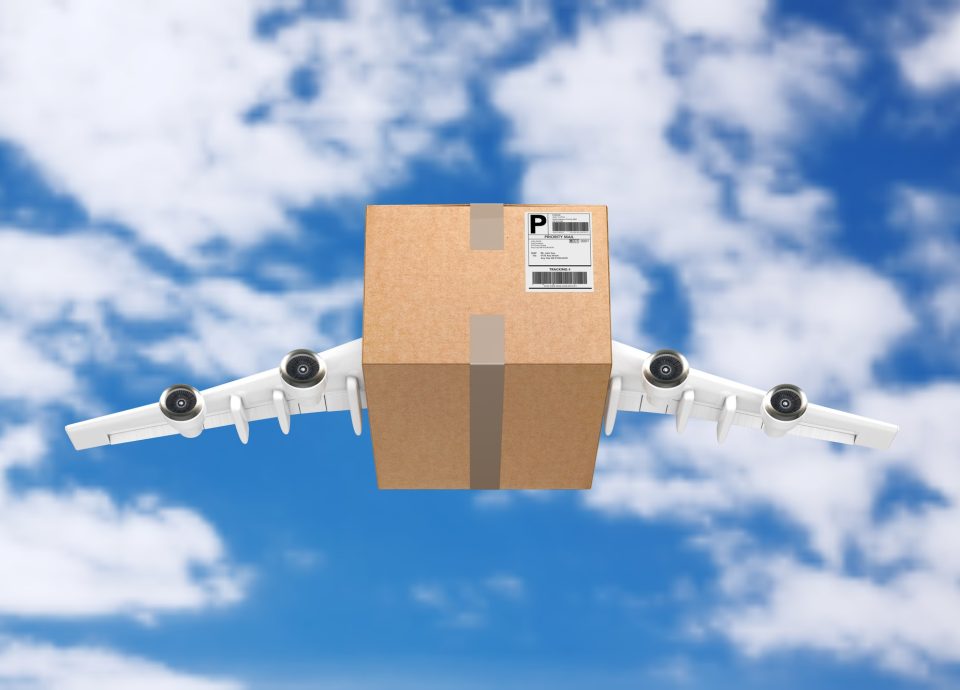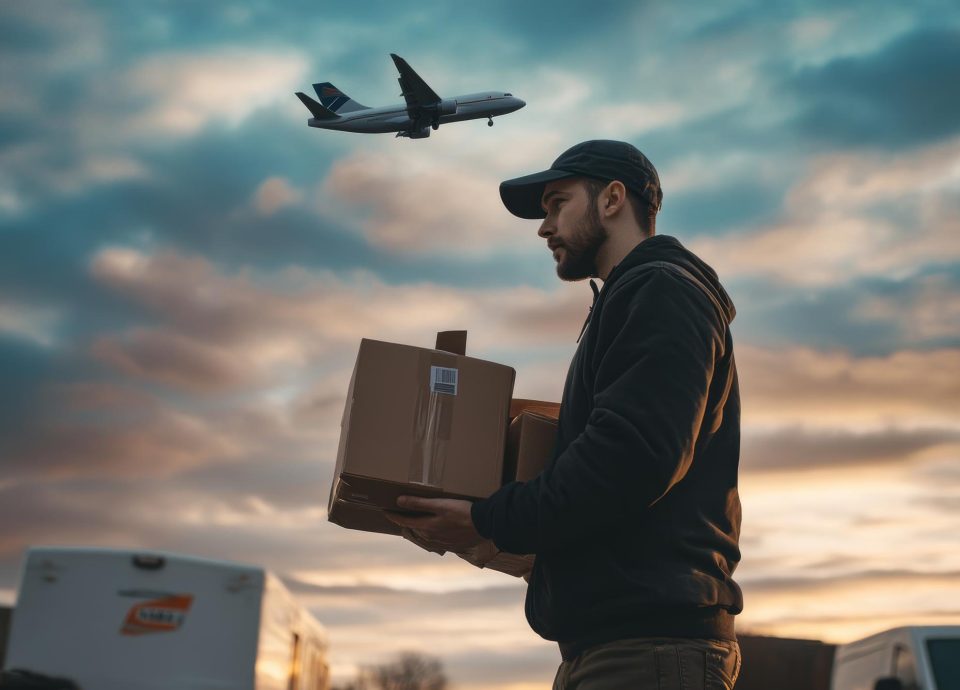When a production line is minutes away from shutting down, a hospital is waiting on a device for surgery, or a retailer needs stock before doors open, speed is not a luxury—it’s mission-critical. In those moments, ground expedite services transform chaos into a plan. Unlike standard LTL or parcel networks, ground expedite services build the route around your shipment, not the other way around—using direct, nonstop vehicles, team drivers, and real-time orchestration to turn hours into outcomes.
Sprinter Emergency Transport Inc. designs and runs these high-stakes moves every day. Drawing on thousands of urgent recoveries across North America, this guide explains what ground expedite services are, when to choose them over air or deferred ground, and how to engineer a process that is fast, secure, compliant, and predictable.
What Are Ground Expedite Services?
Ground expedite services are time-definite, door-to-door shipments moved by dedicated vehicles—sprinter vans, straight trucks, or tractors—often with team drivers so the wheels never stop. The vehicle runs point-to-point with no terminal handoffs, so your freight avoids the dwell, re-sorts, and damages common in hub-and-spoke networks.
Why they exist
- Standard networks favor density and cost efficiency. Ground expedite services prioritize your clock.
- Direct routing and 24/7 dispatch compress transit time without the airport steps required by air.
- Chain-of-custody is simpler: fewer touches, clearer responsibility, cleaner PODs.
Typical equipment
- Sprinter vans for 1–3 pallets, tight sites, or after-hours access
- Straight trucks for mid-size loads with liftgate capability
- Tractors for full or partial truckloads when speed still matters
When to Choose Ground Over Air
Both modes are fast; the question is which solves today’s constraint with the least risk.
Choose ground expedite services when:
- The origin and destination are within a 10–24-hour driving radius.
- Cargo is bulky, hazmat-restricted for air, or requires special handling.
- Pickup/Delivery times are outside airline cargo windows.
- You need dedicated capacity now and can’t wait for the next lift.
Choose air when:
- The lane crosses an ocean or spans a continent with hard same-day deadlines.
- Airside security, temperature validation, or ULD compatibility is essential.
In practice, Sprinter Emergency Transport Inc. often blends both—flying the critical fraction and using ground expedite services for the remainder or for airport-to-door segments.
The End-to-End Workflow (And Where Time Is Won)
1) Rapid intake and routing design
We start with three truths: the deadline, the cargo, and the consequence of failure. From there, ground expedite services lock a vehicle and map alternates, including weather detours and overnight access plans.
What we confirm in five minutes
- Exact dims/weight and any special gear (liftgate, straps, pallets, temp control)
- Pickup/Delivery windows and onsite contacts
- Cross-border details, if applicable (broker, port, paperwork)
2) Packaging that survives the real world
Even the fastest plan fails if packaging collapses. For ground expedite services, we brace internal components, protect corners, and label handling needs clearly. For temperature-sensitive freight, we precondition packouts and log temperatures end-to-end.
3) Dedicated pickup with no terminal dwell
Your shipment goes straight from dock to vehicle. No cross-dock, no re-sort. This is where ground expedite services save the most time versus LTL.
4) Nonstop linehaul with live visibility
Team drivers keep the truck moving. Milestones (departed, border reached, cleared, out for delivery) are pushed automatically. If a delay threatens the ETA, ground expedite services reroute in minutes, not hours.
5) Appointment delivery and POD
White-glove options, secure escorts, and precise time windows ensure your customer is truly “ready to receive.” Ground expedite services close with a clean, timestamped POD, photos, and any chain-of-custody data required.
The Business Case: Why Paying for Speed Often Saves Money
Comparing dollars per mile misses the point. The right lens is total landed cost.
- Downtime avoided: If a line-down costs thousands per hour, the premium for ground expedite services is a rounding error.
- Penalty avoidance: Retail chargebacks and marketplace SLAs add up quickly.
- Shrink reduction: Fewer touches and sealed vehicles cut loss and damage.
- Cash flow: Faster receipt means earlier invoicing and sell-through.
If one shipment prevents a single day of penalties, ground expedite services usually pay for themselves several times over.
Risk Control by Design
Fewer touches, fewer problems
Direct vehicles mean the same crew who picks up is the crew who delivers. That continuity is the quiet superpower of ground expedite services.
Chain-of-custody and security
- Seals recorded at origin and verified at delivery
- Photo documentation at each handoff
- Secure parking plans during driver changes or fuel stops
Compliance matters
- Proper DG segregation, placarding, and paperwork
- Temperature validation for sensitive goods
- Accurate weights and securement per CVOR/CMVSS standards in Canada
Technology That Makes Fast Predictable
Fast only delights when everyone can see it coming.
- Live ETA recalculated with real-time traffic and weather
- Exception alerts if a delay threatens the promise
- APIs/EDI into your TMS/ERP so ops and finance don’t chase emails
- Geo-fenced proof points at pickup, border, and delivery
Ground expedite services are not a black box; they’re a transparent, auditable flow of milestones.
12 Quick Wins to Accelerate Your Next Ground Expedite
- Tender before noon to access more drivers and earlier departures.
- Share exact dock constraints (door heights, yard rules) to avoid on-site surprises.
- Right-size pallets to reduce cube and improve securement.
- Pre-clear any after-hours gate access or badges.
- Stage freight nearest the dock before the truck arrives.
- Photograph the packout for claims protection.
- For cross-border runs, pre-file entries and confirm your broker’s hours.
- Provide two phone numbers for both origin and destination.
- Use tilt/shock indicators for fragile goods.
- Declare actual ready-time, not wishful thinking.
- Add appointment windows to avoid receiver congestion.
- Split critical SKUs across two vehicles if failure is not an option.
Small habits compound into hours saved with ground expedite services.
Cross-Border Considerations (Canada–U.S.)
Cross-border does not need to mean slow. With clean paperwork and the right port strategy, ground expedite services glide through.
- Confirm HS codes, values, and consignee tax IDs on the commercial invoice.
- Align Incoterms and payer of duties/taxes ahead of pickup.
- Choose ports with better overnight staffing when timing is tight.
- Keep the driver’s packet complete: invoices, packing list, POA, and any permits.
For authoritative guidance, consult:
- Canada Border Services Agency – Commercial Importing
- Transport Canada – Commercial Vehicle Safety / Hours of Service
Industry Snapshots: Where Ground Expedite Services Shine
Automotive & industrial MRO
A single missing part can stop output for an entire line. Ground expedite services keep spares moving overnight with predictable handoffs.
Healthcare & life sciences
Validated packaging, temperature control, and secure chain-of-custody make ground expedite services ideal for regional clinical moves.
High-value tech & luxury
Fewer touches and sealed vehicles reduce shrink risk. Photo PODs and serialized item logs keep audits clean.
Retail launches & events
Marketing calendars don’t move. Ground expedite services protect shelf dates and show openings when your DCs are out of cycle.
Packaging Deep-Dive: Build Boxes That Beat the Road
- Compression: Double-wall cartons or engineered crates for expected stacking loads
- Vibration: Foam densities matched to product mass—too soft or too hard transmits shock
- Moisture: Desiccants and barriers for humidity-sensitive items
- Labeling: Handling icons and simple unboxing instructions to cut receiving damage
Well-designed packaging is free speed for ground expedite services because it eliminates rework.
Visibility for Stakeholders: From Plant Managers to CX Teams
Different teams need different signals:
- Plant ops: countdown to ETA, alternates if risk rises
- Customer service: shareable tracking links and scripted updates
- Finance: clean quotes that match invoices, plus accessorial audit trails
- Leadership: KPI dashboards—on-time %, dwell, exception rate
Ground expedite services fuel all four views from a single source of truth.
KPIs That Actually Matter
- On-time delivery (door-to-door)
- Origin and destination dwell
- Exception rate and mean time to recovery
- Scan/milestone compliance
- Quote-to-invoice accuracy
If a provider can’t show these, they’re not running ground expedite services; they’re guessing.
Why Choose Sprinter Emergency Transport Inc.
Speed without discipline creates new risks. Sprinter Emergency Transport Inc. combines capacity, compliance, and communication to turn urgent promises into routine wins.
What you get with our ground expedite services
- Capacity when it counts: a vetted network of sprinter vans, straight trucks, tractors, and team drivers ready 24/7.
- Orchestration, not just booking: route design, live monitoring, and pre-planned alternates.
- Compliance baked in: DG fluency, cross-border coordination, and audit-ready documentation.
- Secure handling: tamper-evident seals, controlled handoffs, and photo verification.
- Real-time visibility: milestone scans from tender to POD, integrated to your systems.
- Transparent pricing: line-item quotes that match invoices—no surprises.
When the cost of failure is measured in minutes, our ground expedite services are built to deliver.
Pricing Transparency and How to Compare Quotes
It’s easy to assume every “expedite” quote is equivalent. In reality, providers can structure pricing very differently. The fairest comparison is an apples-to-apples view of equipment, route, risk, and service commitments.
What should be included
- Equipment specifics: sprinter van vs. straight truck vs. tractor, liftgate fees, pallet jack availability, securement materials.
- Route plan: planned miles, tolls, border ports, and the primary/alternate paths; if the route is vague, so is the risk.
- Time commitments: named pickup window and delivery window with a stated variance.
- Risk controls: seals, photo documentation, and who pays if the receiver is closed or a dock is unavailable.
- Accessorials: waiting time thresholds, layovers, redeliveries, and after-hours fees.
When you demand this clarity up front, the premium for the right option—often a run using ground expedite services on a nonstop vehicle—will usually be justified by fewer surprises and fewer claims.
Common Pitfalls (and How to Avoid Them)
Even experienced teams fall into patterns that slow urgent freight. Here are the traps we see most often and the simple fixes.
Overstating “ready time”
If freight isn’t staged when the driver arrives, you lose the slot to beat traffic, border lines, or receiver cutoffs. Have it staged and wrapped before you request dedicated ground.
Underspecifying the cargo
Vague dims lead to the wrong truck, which means a re-dispatch or unsafe loading. Measure carefully, weigh it, and note odd shapes or center-of-gravity issues. This protects both speed and safety on any express ground run.
Assuming the receiver will be open
After-hours access, dock appointment rules, and site badges can add 30–90 minutes. Confirm them at intake, and book a time window that the site will honor.
Light documentation
Border officers respond faster to clean packets: aligned invoices and packing lists, correct HS codes, and correct importer numbers. This is why our team checks documents during the booking call instead of discovering problems at the port.
Sustainability Without Compromising Speed
No one can wish away the environmental impact of transportation, but smart choices do matter.
- Right-sized equipment: choose the smallest safe vehicle; an over-spec’d tractor burns time and fuel.
- Route intelligence: avoid predictable congestion windows to reduce idle time.
- Prevent rework: packaging that survives the trip prevents re-shipments.
- Blend modes: fly the critical 20% and use ground for the rest, or run expedited trucking for a regional lane instead of short-haul air.
By engineering fewer touches and fewer misses, you actually reduce emissions per successful delivery.
SLA Framework You Can Copy
A crisp service-level agreement keeps everyone aligned—shipper, provider, and receiver.
Include:
- Response time to tenders (e.g., 10 minutes with a human ETA)
- Pickup window variance (e.g., ±30 minutes)
- Delivery variance by distance band (e.g., ±45 minutes under 500 miles; ±90 minutes over)
- Mandatory milestones and alert cadence
- Recovery protocol for weather, crashes, or border inspections
- Claims handling and documentary evidence standards
A provider confident in its ground expedite services will sign an SLA like this and deliver against it.
Two Brief Case Studies
Case 1: A plant saved from downtime
A Tier-1 supplier was hours from a shutdown after a QC hold. We secured a straight truck with team drivers, pre-filed the broker entry, and routed through a port with overnight staffing. The line never stopped. The overtime saved paid for the entire move.
Case 2: A synchronized retail reset
A regional chain needed new fixtures in 18 stores before a weekend launch. We ran a wave plan of sprinter vans on staggered departures, with appointment windows at each site. All stores opened on time. The client now uses a standing playbook built on priority ground transport.
Glossary (Short and Useful)
- Team drivers: two drivers alternating to keep a vehicle moving legally nonstop.
- Liftgate: hydraulic platform for sites without a dock.
- POD: proof of delivery, ideally time-stamped with photos.
- Seal number: tamper-evident device ID recorded at origin and verified at destination.
- Hotshot: quick-deploy, often smaller equipment on short notice.
Knowing the terms helps your team ask sharper questions and get better outcomes the first time.
Make Speed Your Strategy—Not Your Gamble
Unpredictable transit erodes margins and trust. A disciplined program of ground expedite services restores control: dedicated vehicles, nonstop routes, clean paperwork, and live visibility. That combination protects revenue, reputation, and the promises your teams make every day.
Sprinter Emergency Transport Inc. is ready to translate your deadlines into dependable outcomes. Tell us your lane, your constraint, and your must-arrive time—we’ll launch ground expedite services that deliver, today.
Frequently Asked Questions (FAQs)
1) When should I choose ground expedite services instead of air?
Choose ground expedite services when origin and destination are within a long-haul driving radius, when cargo can’t fly, or when airport cutoffs and handling would add risk. For many regional lanes, ground expedite services are as fast door-to-door as air.
2) How do ground expedite services control costs?
By right-sizing equipment, avoiding terminal fees, and eliminating re-sorts, ground expedite services reduce accessorials and damage. Splitting urgent vs. non-urgent lots also helps.
3) Can hazardous or temperature-controlled goods move on ground expedite services?
Yes, with proper DG documentation and validated thermal solutions. Many regulated items move faster and more predictably on ground expedite services than through air cargo terminals.
4) What visibility should I expect during a run?
Live ETAs, geo-fenced scan points, and exception alerts. If a provider can’t show milestones, it isn’t true ground expedite services.
5) How do cross-border moves work with ground expedite services?
Pre-filed entries, complete driver packets, and broker coordination keep borders smooth. The dedicated vehicle used by ground expedite services means fewer stops and simpler inspections.
6) Are ground expedite services available 24/7?
Yes. The model assumes nights, weekends, and holidays. Sprinter Emergency Transport Inc. maintains 24/7 dispatch and recovery for all ground expedite services.
7) How fast can Sprinter Emergency Transport Inc. launch a truck?
In most metros, we can position a vehicle within hours. With accurate dims, ready time, and contact details, we start ground expedite services immediately and keep you updated to POD.




